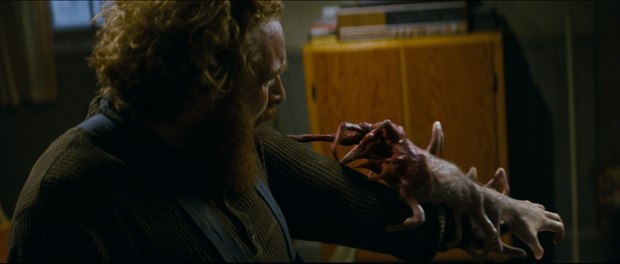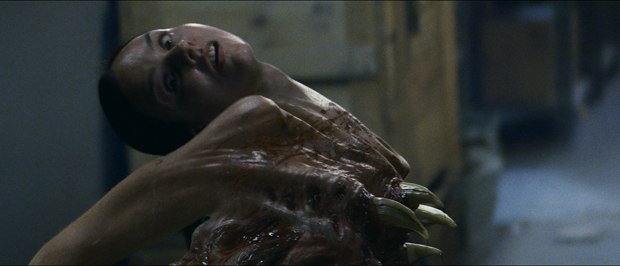The acclaimed John Carpenter monster movie gets a digital upgrade from Image Engine for the new prequel.
From the outset The Thing was intended to recreate as much of the look of John Carpenter's iconic version, but, at the same time, director Matthijs van Heijningen Jr. wanted to take advantage of the latest digital technology to push it further. Jesper Kjolsrud of Image Engine was the production visual effects supervisor and he figured out the best approach to blend practical with CG methods.
"One of the first things that came up was that there was obviously going to be a lot of burning things," Kjolsrud says. "And Matthijs wanted real convincing fire, so the approach was very much to try and film as much as we could practically, and augment it to what we need to do in post. So with the fire, for example, you can create really nice looking flames now with fluid sims. But it's very hard to light the sims. But if you have real fire, you can get anything you ask for. So you have stunt men on fire running through the scene, and if we want to animate differently in the flames, we could use a mixture of elements and CG fire that dynamically behaves we've animated it. But at the same time, we have a flame that is lit with a real fire and I think that was a very good approach."
But, of course, it's the new thing that is the mainstay of this prequel to the 1982 Carpenter film. It was designed by ADI in homage to creature makeup designer Rob Bottin. However, there are some new twists. "There was a rethink when it came to shooting it because it wasn't symmetrical," Kjolsrud adds. "And our movie explains a lot of some of the little things they have in Carpenter's movie, including this two-headed burned monster they find in the Norwegian camp that they take back to their camp to study. So they designed something that ties into that. The faces had to look kind of similar, but the limbs were never seen that well in Carpenter's movie so they went to town and have the limbs that stick out looking raw. We actually see how it becomes the two-headed creature and who the two faces are. It's a humanoid with normal skin up to a point. And because it's R-rated we could take more liberties when it's transforming and growing to make it really disgusting."
Obviously this was a far cry from Image Engine's crustacean alien from District 9. For that they had one creature with multiple versions. But the challenge here involved multiple creatures and a transformation but similarly done in Maya and rendered in 3delight. "And the transforming bit is really what we started looking at," Kjolsrud continues. "Right from the beginning we started to break things down into smaller and smaller bits, trying to figure out each of those smaller parts. And once we had the footage, we broken it down into shots as well. But, technically, we would throw anything at it, including cloth sims, even for skin. And for the transformations we would draw from human to almost an upside down spider with tentacles coming out of the chest.
"That became in terms of rigging, two very different things. We called them riglets. Rather than traditionally placing your joints and bones inside a piece of geometry, you could rebuild a whole rig with small tweaks. You'd go from one shot where a couple of legs grow out, which would have one specific rig for that shot. We would have to rig it slightly differently to keep the transformation going, but the end result was very much a traditional animated rig when it's full formed. And on top of that, for each shot we would go in and actually animate deformers going through an extra layer on top of the skin. So when something grows we'd have bubbles and bones popping out."
The customization, meanwhile, was done with Image Engine's open source graphics library called Cortex developed by John Haddon, which includes C++ code bound into Python and tied into Maya.
"For me, what was most important was to get as good a plate as possible and to film it as good as possible," Kjolsrud emphasizes. " I got involved with costumes and special effects and stunts and came up with plans for shooting as much realistically as possible. Pulling out cloth with little wires and things and trying to get as much in camera, even knowing that for it to work with animation we needed to do a cloth sim of that anyway. But at least you have something that works in the frame and it's lit really nicely."
Bill Desowitz is former senior editor of AWN and editor of VFXWorld. He has a new blog, Immersed in Movies (www.billdesowitz.com), and is currently writing a book about the evolution of James Bond from Connery to Craig, scheduled for publication next year, which is the 50th anniversary of the franchise.










